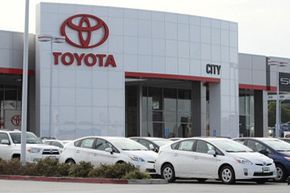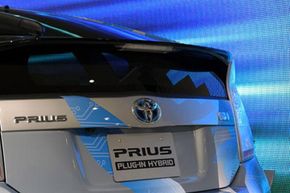The hybrid car has been touted as the green savior of the automobile industry. A decade after the Toyota Prius debuted worldwide, issues like climate change and energy security have helped push the popular hybrid's sales numbers past the two million mark -- nearly half of them sold in North America [source: Autoblog].
Americans don't buy the Prius for its style or speed. They buy it to save money on gas and to shrink their carbon footprint. In most American cities, the personal automobile is the largest overall polluter, spewing millions of pounds of greenhouse gases like carbon dioxide, nitrous oxide, carbon monoxide and sulfur oxide into the atmosphere and into our lungs [source: EPA]. Eco-conscious consumers see the Prius and other hybrids as an investment in the environment and in our collective future.
Advertisement
But are hybrids really as green as they seem? How much is marketing hype and how much is scientific fact? Because hybrids have a second electric motor, they burn less fuel than conventional cars and emit lower levels of greenhouse gases during operation. That's great, but what about the hybrid manufacturing process? In 2007, a report commissioned by an auto industry trade group insisted that when you factor in the waste generated during production, the notoriously gas-guzzling Hummer is actually greener than the Prius [source: Slashdot]. While this report was largely discredited by environmental groups, it did raise an important question: does the pollution created during hybrid production offset the benefits of "green" driving?
The answer might surprise you. According to an in-depth study by the U.S. Department of Energy's Argonne National Laboratory, hybrid cars do, in fact, require more energy to produce than conventional cars, emitting more greenhouse gases and burning more fossil fuels during the manufacturing process. The production of hybrid batteries, in particular, requires much more energy than producing a standard car battery and results in higher emission levels of gases like sulfur oxide [source: Burnham et al].
But do the environmental impacts of hybrid vehicle production outweigh the long-term benefits of driving a cleaner running automobile? That answer is a resounding "no." If you drive both a conventional and hybrid car for 160,000 miles (257,495 kilometers), the conventional vehicle requires far more energy to operate and emits far more greenhouse gases over its lifetime, significantly canceling out any imbalance during the production stage [source: Burnham et al].
Keep reading as we break down the statistics for both hybrid production emissions and hybrid driving emissions and learn what "green" really means.
Advertisement

